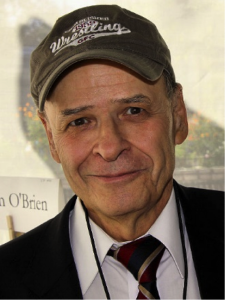
See image credit below.
In any war story, but especially a true one, it’s difficult to separate what happened from what seemed to happen. What seems to happen becomes its own happening and has to be told that way. The angles of vision are skewed. . . . The pictures get jumbled; you tend to miss a lot. And then afterward, when you go to tell about it, there is always that surreal seemingness, which makes the story seem untrue, but which in fact represents the hard and exact truth as it seemed.
This excerpt from “How to Tell a True War Story” appears in Tim O’Brien’s 1990 book, The Things They Carried.
Like Ernest Hemingway’s 1925 book In Our Time, which tells the pre-story, story, and post-story of World War I and its “time” in America and Europe, Tim O’Brien’s The Things They Carried tells the before, during, and after of America and the Vietnam War. Last week, I talked about In Our Time. This week, as we mark Veterans Day, I appreciate In Our Time and The Things They Carried and the way they challenge us to think about the horrors of war.
There are so many clues that O’Brien had Hemingway’s book in mind.
Like Hemingway, O’Brien uses a semi-autobiographical recurring main character throughout the book. Is it live, or is it Memorex? Is this Tim O’Brien speaking – or Tim O’Brien? An actual person named Tim O’Brien or a fictional character who happens to be named Tim O’Brien?
Like Hemingway, O’Brien shatters his book into fragments – but while Hemingway was inspired by the modernist movement, O’Brien was quite obviously influenced by the postmodernist movement. So in addition to being fragmented, O’Brien’s book is also “about” itself, about war stories and what makes them, about how we construct our sense of who we are. To use a word that came to the fore during the postmodern movement, The Things They Carried is very “meta.”
Like In Our Time, The Things They Carried has pieces that stand fully on their own (read the title story, for example, to see what I mean), but when taken all together, the pieces have a much deeper resonance.
And where Hemingway brought World War I to life in all its horror, O’Brien vividly makes us see and experience the horrors of Vietnam. In fact, The Things They Carried has really become the classic statement about and exploration of the Vietnam War – from those who contemplated dodging the draft to privates who slogged through the jungle with far too much to “carry.”
Two stories stand out for me: “The Things They Carried” and “On the Rainy River,” about O’Brien’s experience of nearly escaping to Canada so he could dodge the draft. Both are certainly worth your time – but then again, the entire book is worth a careful read.
I also want to give a shout-out to my former student and friend Chris Shugrue, whose 2014 chapbook, Straw Writes, is deeply influenced by The Things They Carried. It’s great to look back on the course I taught on the Modern Novel and the Postmodern Novel, our pairing in the course of In Our Time and The Things They Carried, and the way Chris built on our explorations in that course. In a recent interview, Chris said,
Straw Writes is a response to Tim O’Brien’s The Things They Carried, which I think is a response to Hemingway’s In Our Time. So Straw Writes is a response to both those works, an attempt to continue the conversation started by Hemingway and picked up by O’Brien. I’m fascinated by the idea of writers speaking to each other through the written word across time and space, and Straw Writes is definitely infused with that spirit. Scrape away the text and you’ll see I’m attempting to conjure up conversation with quite a few writers, alive or otherwise.
Those who know Chris won’t be surprised to discover strong echoes of Walt Whitman and Allen Ginsberg in his book as well.
Ready to read The Things They Carried and to learn more about it? You can read it for free online – or take the plunge and buy a hard copy. The National Endowment for the Arts focused one of its Big Reads on The Things They Carried – and you won’t be disappointed at the rich resources they provide. Mental Floss offers “12 Harrowing Facts about ‘The Things They Carried.’” You might want to visit the Pen America website to learn why The Things They Carried has been a banned book. (You can read about other banned books on StoryWeb: see the Maya Angelou post for more on this topic.) If you want to explore the Hemingway/O’Brien connection in depth, check out Alex Vernon’s 2004 book, Soldiers Once and Still: Ernest Hemingway, James Salter, and Tim O’Brien
. An excellent discussion of In Our Time and The Things They Carried can be found in a special Vietnam War edition of the War, Literature, and the Arts journal.
Don’t forget to leave a comment on this post! You’ll be entered into a monthly drawing to win a StoryWeb T-shirt if you do one of the following. 1) Subscribe to the weekly StoryWeb email, and leave a comment here (or on any other post!). 2) Subscribe to the StoryWeb podcast in iTunes, and leave a review on iTunes. (If you subscribe on iTunes and leave a review there, shoot me an email at linda@thestoryweb.com to let me know you did so!)
Podcast: Play in new window | Download
Subscribe to StoryWeb in iTunes.Listen to the podcast in Stitcher.
Image credit: Photograph of Tim O’Brien by Larry D. Moore, https://commons.wikimedia.org/wiki/File:Tim_obrien_2012.jpg